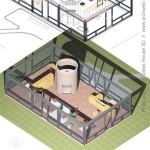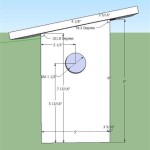The Planning Phase: A Crucial First Step in Building a House
Building a house is a significant undertaking that involves careful planning, coordination, and execution. The planning phase forms the foundation for a successful project, setting the stage for a smooth and efficient construction process. In this comprehensive guide, we'll delve into the intricacies of the planning phase, providing insights and practical advice to help you navigate this critical stage of building your dream home. ### 1. Define Your Vision and Goals The planning phase begins with clearly defining your vision and goals for the house. Consider the following aspects: -Family Needs and Lifestyle:
Think about the needs and preferences of your family members. How many bedrooms and bathrooms do you require? Do you need dedicated spaces for work, hobbies, or entertainment? -Budget and Financing:
Determine your budget and secure financing. Consider the total cost of construction, including materials, labor, and permits. -Location and Site Evaluation:
Select a suitable location for your house. Evaluate the site's topography, soil conditions, access to utilities, and proximity to amenities. ### 2. Assemble Your Design Team Building a house is a collaborative effort involving various professionals. Assemble a design team that includes: -Architect:
The architect is responsible for translating your vision into a workable design. Look for an architect with experience in residential design and a style that aligns with your preferences. -Structural Engineer:
The structural engineer ensures the safety and integrity of the building. They calculate the loads and stresses on the structure and design the foundation, frame, and other structural elements. -Interior Designer:
If desired, hire an interior designer to help you create a cohesive and functional interior design scheme. ### 3. Develop a Comprehensive House Plan The house plan serves as the blueprint for your dream home. It includes detailed drawings and specifications for every aspect of the construction. Key elements of a house plan include: -Floor Plans:
Floor plans show the layout of each floor, including room dimensions, wall locations, and the placement of windows and doors. -Elevations:
Elevations are vertical drawings that show the exterior appearance of the house from different sides. -Sections:
Sections are vertical drawings that cut through the house to show the interior layout and construction details. -Specifications:
Specifications provide detailed information about the materials, finishes, and construction methods to be used. ### 4. Obtain Necessary Permits and Approvals Before construction can begin, you must obtain the necessary permits and approvals from local authorities. This may include: -Building Permit:
A building permit is required for any new construction or major renovation project. -Zoning Permits:
Zoning permits ensure that your house complies with local zoning regulations. -Environmental Permits:
If your property is located in an environmentally sensitive area, you may need environmental permits. ### 5. Finalize Construction Timeline and Budget Once the house plan is complete and permits are secured, it's time to finalize the construction timeline and budget. Consider the following factors: -Construction Timeline:
Work with your contractor to develop a realistic construction timeline. This will help you plan for move-in dates and avoid delays. -Budget Breakdown:
Break down the budget into different categories, such as materials, labor, and permits. This will help you track expenses and ensure you stay within budget. ### 6. Choose a Reliable Contractor Selecting the right contractor is crucial for the success of your building project. Look for a contractor with: -Experience and Expertise:
Choose a contractor with experience in residential construction, preferably in your area. Check their references and portfolio to assess their work quality. -Licensing and Insurance:
Ensure the contractor is licensed and insured. This protects you in case of accidents or property damage during construction. -Communication Skills:
Effective communication is key. Choose a contractor who is responsive, transparent, and willing to work collaboratively with you. ### 7. Prepare for Construction Before construction begins, there are a few essential steps to take: -Site Preparation:
Clear the site, remove any existing structures, and prepare the foundation area. -Utilities Hookup:
Arrange for the connection of utilities, such as water, electricity, and gas, to the site. -Safety Measures:
Implement safety measures, such as fencing the construction site and posting warning signs. The planning phase is a critical stage that sets the foundation for a successful building project. By taking the time to carefully plan and prepare, you can ensure a smooth and efficient construction process, ultimately leading to the realization of your dream home.
How Long Does It Take To Build A House Extension John Webster Architecture

Phases In Life Cycle Of A Construction Project Planning Execution

A Step By Guide To The Home Building Process Newhomesource

Designing Your Own Home The Planning Phase Of Building A House Smash Design Interior Exterior Inspiration

Basics Of Building Construction The Constructor

House Construction Procedure Step By

Sequence Of Work In Building Construction The Constructor

Project Management For Construction Planning

The 6 Stages Of A Construction Project Why They Matter

Designing A Home Yourhome








